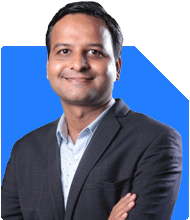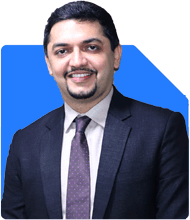Should I continue SIP with ICICI Bluechip & Canara Robeco Bluechip? Also, what new SIP funds should I start for a 10-year horizon?
Ramalingam Kalirajan |10872 Answers |Ask -Follow
Mutual Funds, Financial Planning Expert - Answered on Nov 04, 2024
He has an MBA in finance from the University of Madras and is a certified financial planner.
He is the director and chief financial planner at Holistic Investment, a Chennai-based firm that offers financial planning and wealth management advice.... more

Sir i am doing SIP OF RS 10000 EACH IN ICICI BLUE CHIP AND CANARA ROBECO BLUE CHIP FUND. RS 5000 IN PPFAS FLEX CAP FUND. I WANT TO START SIP FORCRS 10000 MORE. KINDLY SUGGEST WHETHER MY SIP ARE CORRECT AND FUNDS TO START NEW SIP. HORIZON IS ABT 10 YRS.
Reviewing Your Existing SIPs
Current Equity Focus: You are currently investing Rs 10,000 each in two blue-chip funds. Blue-chip funds focus on large-cap companies, offering stability and potential for steady growth. With a 10-year horizon, this choice is generally aligned with long-term goals, as large-cap funds can provide consistency and moderate growth over time.
Flexi Cap Investment: Your Rs 5,000 SIP in a flexi-cap fund brings exposure across large-, mid-, and small-cap segments. This is beneficial, as it allows the fund manager flexibility to allocate between different market caps, potentially boosting returns through strategic diversification.
Long-Term Potential: Both blue-chip and flexi-cap categories align well with a 10-year goal. The large-cap focus provides stability, while the flexi-cap allocation enhances growth potential. This combination balances risk and return, creating a solid base for wealth accumulation.
Considering Portfolio Diversification
Diversification Beyond Large Cap: Your portfolio is currently weighted towards large-cap funds. For a 10-year horizon, adding exposure to mid- or small-cap funds could enhance returns. Mid-cap funds, for instance, have historically outperformed large caps over longer periods due to their growth potential, though they carry slightly higher volatility.
Sectoral and Thematic Funds: For a focused long-term strategy, sectoral or thematic funds are another option. These funds invest in specific sectors like technology or healthcare, capturing sector-specific growth. However, sectoral funds are volatile and may require periodic review, as they depend on sector performance. They should form only a small part of your portfolio due to their concentrated risk.
Balancing Risk with Multi-Cap Allocation: Multi-cap funds are ideal for diversification. These funds distribute investments across market segments and are actively managed to maximise growth opportunities. A multi-cap fund could serve as a middle ground, reducing risk compared to small-cap funds while potentially outperforming large-cap-only funds.
Tax Efficiency and Investment Structure
Capital Gains Taxation on Mutual Funds: With equity funds, long-term capital gains (LTCG) above Rs 1.25 lakh are taxed at 12.5%. For short-term gains, the rate is 20%. Given the long investment horizon, focusing on tax efficiency through long-term holdings is advisable to optimise net returns.
Benefits of Investing in Regular Mutual Funds via MFDs: Direct mutual funds may appear cost-effective due to lower expense ratios. However, regular funds offer expert advice and portfolio management by Certified Financial Planners (CFPs) and MFDs. The guidance of professionals ensures proper fund selection and rebalancing based on market conditions and your goals. This support can add value beyond mere expense savings.
Recommendations for Additional SIP Investment Options
To maximise your portfolio’s growth potential and address any gaps, consider these fund types for your new Rs 10,000 SIP allocation.
Mid-Cap Funds: Adding a mid-cap fund can offer higher growth potential. Mid-caps have room for expansion and often outperform large-caps over longer periods. However, they can be volatile in the short term. Allocating Rs 5,000 to a mid-cap fund could provide a growth boost while balancing risk with your existing large-cap investments.
Multi-Cap Funds: A multi-cap fund with Rs 5,000 would offer diversification across all market caps. Multi-caps adjust their allocation dynamically, capturing growth from all segments. This approach reduces dependency on a single segment, helping your portfolio perform well across varying market cycles.
Balanced Advantage Fund (BAF): For stability, consider adding a balanced advantage fund. These funds adjust between equity and debt based on market conditions, offering both growth and capital protection. With a portion in BAF, you could enjoy equity-linked returns with reduced volatility, which complements pure equity holdings.
Strategic Allocation for Long-Term Wealth Creation
Staggering Investments: Since you’re looking at a 10-year horizon, consider a staggered SIP approach for new investments. This will help you capture market volatility to your advantage through rupee-cost averaging, reducing the impact of short-term market fluctuations.
Review and Rebalance Periodically: Set a review frequency—ideally once a year. During this review, assess fund performance, portfolio composition, and alignment with goals. Rebalancing ensures that your portfolio remains aligned with your risk tolerance and growth objectives as markets evolve.
Setting Growth Expectations: It’s important to have realistic growth expectations, especially with a diversified portfolio. While mid- and small-cap funds can outperform, they also bring higher volatility. Balancing these funds with blue-chip and balanced advantage funds can stabilise returns over time.
Final Insights
Your current investments lay a solid foundation with stability from blue-chip funds and growth flexibility through a flexi-cap fund.
By adding mid-cap, multi-cap, and possibly a balanced advantage fund, you diversify across market caps and asset classes, optimising for growth with moderated risk.
A Certified Financial Planner’s guidance ensures that your portfolio adapts to market shifts, which is vital over a 10-year horizon. This professional advice will help in balancing cost-efficiency and tailored fund management, which is crucial in optimising long-term growth.
Regular reviews and rebalancing, supported by an MFD with CFP credentials, will enhance your portfolio’s performance and alignment with your 10-year goals.
Best Regards,
K. Ramalingam, MBA, CFP,
Chief Financial Planner,
www.holisticinvestment.in
https://www.youtube.com/@HolisticInvestment
You may like to see similar questions and answers below
Ulhas Joshi |280 Answers |Ask -Follow
Mutual Fund Expert - Answered on Sep 25, 2023
Ramalingam Kalirajan |10872 Answers |Ask -Follow
Mutual Funds, Financial Planning Expert - Answered on May 01, 2024
Ramalingam Kalirajan |10872 Answers |Ask -Follow
Mutual Funds, Financial Planning Expert - Answered on May 11, 2024
Ramalingam Kalirajan |10872 Answers |Ask -Follow
Mutual Funds, Financial Planning Expert - Answered on May 16, 2024
Ramalingam Kalirajan |10872 Answers |Ask -Follow
Mutual Funds, Financial Planning Expert - Answered on Dec 28, 2024
Nayagam P P |10851 Answers |Ask -Follow
Career Counsellor - Answered on Dec 07, 2025
Nayagam P P |10851 Answers |Ask -Follow
Career Counsellor - Answered on Dec 07, 2025
Radheshyam Zanwar |6736 Answers |Ask -Follow
MHT-CET, IIT-JEE, NEET-UG Expert - Answered on Dec 06, 2025

Good luck.
Follow me if you receive this reply.
Radheshyam
Dr Nagarajan J S K |2576 Answers |Ask -Follow
NEET, Medical, Pharmacy Careers - Answered on Dec 06, 2025
Mihir Tanna |1090 Answers |Ask -Follow
Tax Expert - Answered on Dec 06, 2025
Ramalingam Kalirajan |10872 Answers |Ask -Follow
Mutual Funds, Financial Planning Expert - Answered on Dec 06, 2025
Radheshyam Zanwar |6736 Answers |Ask -Follow
MHT-CET, IIT-JEE, NEET-UG Expert - Answered on Dec 06, 2025
Radheshyam Zanwar |6736 Answers |Ask -Follow
MHT-CET, IIT-JEE, NEET-UG Expert - Answered on Dec 06, 2025
Radheshyam Zanwar |6736 Answers |Ask -Follow
MHT-CET, IIT-JEE, NEET-UG Expert - Answered on Dec 06, 2025
Dr Dipankar Dutta |1837 Answers |Ask -Follow
Tech Careers and Skill Development Expert - Answered on Dec 05, 2025

























